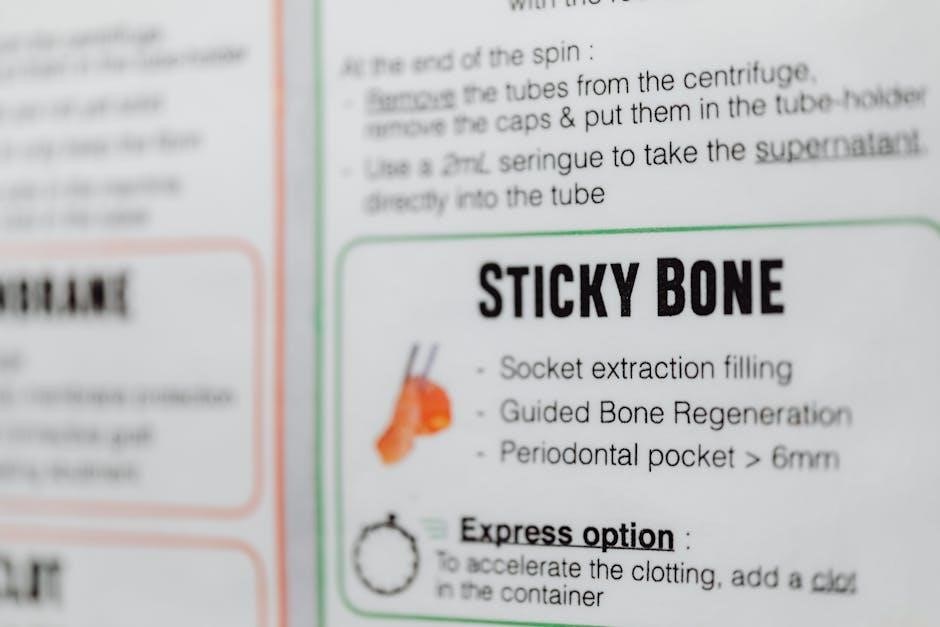CT-1065 Instructions Article Plan
This comprehensive guide will navigate the intricacies of Form CT-1065, the Connecticut Pass-Through Entity Tax Return. We’ll explore filing requirements, deadlines, and available methods, including electronic options. Amended return procedures and extension possibilities will also be covered. Stay tuned for clear explanations and practical advice.
Overview of Form CT-1065
Form CT-1065, officially titled the Connecticut Pass-Through Entity Tax Return, serves as the primary instrument for partnerships operating within Connecticut to report their income, deductions, and credits to the state’s Department of Revenue Services. This form is crucial for ensuring tax compliance and calculating the Pass-Through Entity Tax (PET), if applicable. It applies to various partnership structures, including general partnerships, limited partnerships, and limited liability partnerships.
The CT-1065 requires detailed information about the partnership’s activities, including its income sources, deductible expenses, and partner information. Schedules may need to be completed and attached to the CT-1065, such as Schedule CT-AB for Alternative Base Calculation or Schedule CT-K1 for each partner’s share of income, deductions, credits. Accurate completion of this form is essential for determining the correct tax liability and avoiding potential penalties. The form also incorporates any combined election information.
Understanding the instructions accompanying Form CT-1065 is paramount for accurate filing. These instructions provide guidance on completing each section of the form, determining eligibility for certain deductions and credits, and navigating specific situations that may apply to the partnership. Staying updated on the latest version of the instructions, often available in PDF format, is crucial due to potential legislative changes and updates to tax laws. This overview provides a general understanding of the CT-1065’s purpose and importance in Connecticut’s tax landscape.
Who Needs to File CT-1065
Determining whether you need to file Form CT-1065 is essential for partnerships operating in Connecticut. Generally, any entity classified as a partnership for federal income tax purposes and conducting business in Connecticut is required to file this return. This includes general partnerships, limited partnerships, and limited liability partnerships (LLPs).
Even if a partnership doesn’t have a physical presence in Connecticut, it may still be required to file if it derives income from sources within the state. This could include income from sales, services performed, or property located in Connecticut. The criteria for determining whether a partnership has nexus (sufficient connection) with Connecticut can be complex, so consulting the CT-1065 instructions or seeking professional advice is recommended.
It’s important to note that all members, including members that are Pass-Through Entities (PEs), must be included in Part 1, Schedule A. Furthermore, if the entity files a federal extension, the entity must still electronically file the CT-1065/CT-1120SI. Failure to file when required can result in penalties and interest charges. Therefore, understanding the filing requirements is crucial for maintaining compliance with Connecticut tax laws. If uncertainty exists, it’s always best to err on the side of caution and file the return.
Key Dates and Deadlines for CT-1065
Understanding the critical dates and deadlines for filing Form CT-1065 is paramount to avoid penalties and maintain compliance with Connecticut tax regulations. The standard due date for Form CT-1065 is typically the 15th day of the third month following the close of the partnership’s taxable year. For partnerships operating on a calendar year, this translates to a deadline of March 15th.
However, it’s crucial to remember that these dates can shift, especially when the 15th falls on a weekend or holiday. In such cases, the deadline is extended to the next business day. It’s always advisable to verify the specific deadline for the tax year in question by consulting the official CT-1065 instructions or the Connecticut Department of Revenue Services website.
Furthermore, if a partnership anticipates being unable to meet the standard filing deadline, it can request an extension of time to file. To do so, the partnership must file Form CT-1065/CT-1120SI EXT, Application for Extension of Time to File Connecticut Pass-Through Entity Tax Return, on or before the original due date. This extension typically grants an additional six months to file the return. Note that an extension of time to file is not an extension of time to pay any tax due.
Filing Methods: Electronic vs. Paper
When it comes to submitting Form CT-1065, Connecticut offers partnerships a choice between two primary filing methods: electronic filing (e-filing) and paper filing. While both options are available, the state encourages electronic filing due to its efficiency, accuracy, and security benefits.
Electronic filing offers several advantages, including faster processing times, reduced errors, and immediate confirmation of receipt. It also eliminates the need for paper documents, contributing to environmental sustainability. Connecticut’s online filing system, often accessible through the Department of Revenue Services website, provides step-by-step guidance and built-in validation checks to ensure accuracy.
On the other hand, paper filing involves completing the physical Form CT-1065 and mailing it to the address specified in the instructions. While this method may seem straightforward, it can be more prone to errors and delays. Additionally, it may require more time for processing and does not offer immediate confirmation of receipt.
It’s important to note that while paper filing is permitted, Connecticut may not accept manual check payments for paper-filed returns, potentially necessitating online payment arrangements. Therefore, partnerships should carefully consider the pros and cons of each method before choosing the most suitable option for their specific circumstances.
Amended Return Instructions
If a partnership discovers an error or omission on a previously filed Form CT-1065, it is necessary to file an amended return to correct the information. To indicate that the return is an amended one, you must specifically mark the appropriate box or field within the form.
The process for filing an amended CT-1065 generally involves obtaining a copy of the original return and making the necessary corrections. It’s crucial to provide a detailed explanation of the changes being made and the reasons for the amendment. This explanation should be attached to the amended return.
When completing the amended form, ensure that all relevant sections are updated to reflect the corrected information. This may include adjustments to income, deductions, credits, or other items reported on the original return. Supporting documentation should be provided to substantiate the changes.
The amended return should be filed using the same method as the original return – either electronically or by mail. If filing electronically, follow the specific instructions provided by the Connecticut Department of Revenue Services for submitting amended returns. If filing by mail, send the amended return to the address designated for amended returns.
Remember to retain a copy of the amended return and all supporting documentation for your records.
Extension of Time to File
If a partnership requires more time to file its Connecticut Form CT-1065, it can request an extension of time. To do so, the partnership must file Form CT-1065/CT-1120SI EXT, Application for Extension of Time to File Connecticut Pass-Through Entity Tax Return.
This form must be filed on or before the original due date of the CT-1065 return. Filing the extension provides an automatic six-month extension of time to file.

It is crucial to understand that an extension of time to file does not grant an extension of time to pay any tax due. The partnership must still estimate and pay any tax owed by the original due date to avoid penalties and interest.
The extension application requires the partnership to provide its name, address, federal employer identification number (FEIN), and the reason for requesting the extension. Additionally, the partnership must estimate the amount of tax it expects to owe and submit payment with the extension form.
The extension, if granted, is only valid for the CT-1065 return. If the partnership also needs an extension for its federal return, it must file a separate extension request with the IRS.
Ensure accurate completion of the extension form and timely submission to avoid potential issues.

Schedule CT-AB: Alternative Base Calculation
Schedule CT-AB, Alternative Base Calculation, is a crucial component of Form CT-1065 when a Pass-Through Entity (PE) elects to calculate its tax liability using an alternative base. This schedule is not the default method; it’s utilized only when the PE makes a specific election.
The standard base is the default method for calculating the PE tax. However, certain PEs might find the alternative base more advantageous depending on their specific circumstances and income composition. The alternative base allows for a different calculation method, potentially reducing the overall tax burden.
To utilize Schedule CT-AB, the PE must complete Form CT-1065/CT-1120SI and attach the completed Schedule CT-AB. The schedule requires detailed information regarding the PE’s income, deductions, and other relevant financial data to accurately determine the alternative tax base.
It is essential to carefully review the instructions for Schedule CT-AB to ensure proper completion. Understanding the specific requirements and calculations involved is crucial for accurate tax reporting.
The election to use the alternative base is optional, and the PE should carefully analyze its financial situation to determine whether this method is beneficial. Consulting with a tax professional is recommended to make an informed decision.
Remember to attach the completed Schedule CT-AB to Form CT-1065 when filing if the alternative base election is made.
Combined Election Information
The Combined Election, related to Connecticut’s pass-through entity tax, presents an optional method for nonresident members to satisfy their Connecticut income tax obligations. This election, when made, allows the pass-through entity (PE) to remit composite income tax on behalf of its electing nonresident members.
For comprehensive details regarding the Combined Election, refer to the instructions for Schedule CT-CE, Combined Election. This schedule outlines the specific requirements, eligibility criteria, and procedures for participating in the election.
The Combined Election offers a streamlined approach for nonresident members, as it consolidates their Connecticut income tax obligations into a single payment made by the PE. This can simplify tax compliance for both the members and the entity.
However, the Combined Election is not mandatory. Nonresident members can choose to file their individual Connecticut income tax returns instead. The decision to participate in the Combined Election should be based on an individual assessment of each member’s circumstances and tax planning strategies.
To participate, the PE must follow the guidelines specified in Schedule CT-CE instructions and obtain consent from the electing nonresident members. Accurate record-keeping and reporting are crucial for ensuring compliance with Connecticut tax regulations.
Consult the Schedule CT-CE instructions for detailed information on eligibility requirements and procedures for the Combined Election.
Common Errors and How to Avoid Them
Filing Form CT-1065 accurately is crucial to avoid potential issues with the Connecticut Department of Revenue Services. Several common errors can lead to processing delays or even penalties. One frequent mistake involves incorrect member information, such as names, addresses, or ownership percentages. Double-check all details against official records to ensure accuracy.
Another common error arises from miscalculating income or deductions. Thoroughly review all financial data and supporting documentation before completing the form. Pay close attention to specific instructions regarding allowable deductions and ensure you have the necessary documentation to support your claims.
Failure to attach required schedules is another frequent oversight. Verify that all necessary schedules, such as Schedule CT-AB (Alternative Base Calculation) or Schedule CT-K1s, are included with the return. Missing schedules can result in incomplete processing and potential penalties.
Incorrectly marking the return as an amended return is also a common mistake. If filing an amended return, clearly indicate this on the form and provide a detailed explanation of the changes made.
Finally, ensure timely filing and payment. Missing deadlines can result in penalties and interest charges. Utilize electronic filing and payment options when possible to ensure timely submission and reduce the risk of errors.
By carefully reviewing the instructions, double-checking all information, and utilizing available resources, you can minimize the risk of common errors and ensure accurate and timely filing of Form CT-1065.
Where to Find the Latest CT-1065 Instructions

Accessing the most up-to-date instructions for Form CT-1065 is essential for accurate filing. The primary source for these instructions is the official Connecticut Department of Revenue Services (DRS) website. Navigate to the DRS website and locate the “Forms” or “Tax Information” section.

Within the forms section, you can search for “CT-1065” or browse through the list of available forms. Ensure you select the instructions specifically for the current tax year, as instructions may vary from year to year due to legislative changes or updates in tax laws.
The CT-1065 instructions are typically available in PDF format for download. You can also find related schedules and publications on the DRS website. It is advisable to download and save the instructions for future reference during the filing process.
In addition to the DRS website, you may find unofficial copies of the instructions on third-party tax preparation websites or software. However, it is crucial to verify that these copies are current and accurate by comparing them to the official DRS version.
Keep an eye out for any announcements or updates from the DRS regarding changes to the CT-1065 instructions. These updates may be communicated through the DRS website, email notifications, or professional tax organizations.
By relying on the official DRS website and staying informed about any updates, you can ensure you have the latest and most accurate instructions for filing Form CT-1065.
Payment Options and Instructions
When filing Form CT-1065, it’s crucial to understand the available payment options and follow the instructions carefully to ensure timely and accurate payment of any tax due. The Connecticut Department of Revenue Services (DRS) offers several convenient methods for remitting payments associated with the CT-1065.
One of the most common methods is electronic payment through the DRS online portal, myconneCT. This system allows you to securely submit payments directly from your bank account. To use myconneCT, you’ll need to create an account and follow the prompts to initiate the payment process.
Another electronic payment option is through ACH credit, which involves initiating the payment through your bank’s online banking system. Contact your bank for specific instructions on how to set up an ACH credit payment to the DRS.
While electronic payment is preferred, the DRS may also accept payments by check or money order, although this is becoming less common. If paying by check, make it payable to the “Connecticut Department of Revenue Services” and include the entity’s FEIN, the tax year, and Form CT-1065 on the check.
Carefully review the instructions on Form CT-1065 for the correct mailing address for check payments. It’s essential to mail the payment in a timely manner to avoid penalties and interest.
Be sure to retain a copy of your payment confirmation for your records. Whether you pay electronically or by check, documentation of your payment is essential in case of any discrepancies.